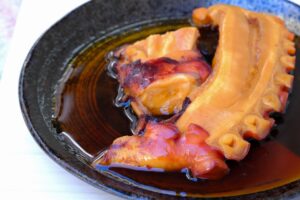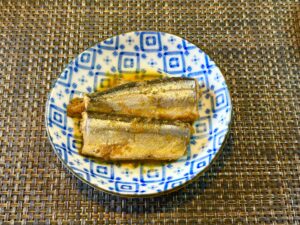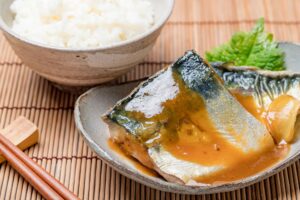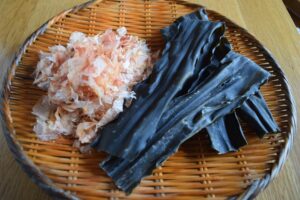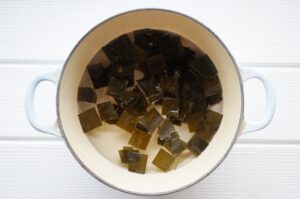Inari Sushi, or inarizushi, is a traditional Japanese dish made of seasoned sushi rice tucked into sweet and savory tofu pouches. Unlike the more well-known nigiri or maki rolls, Inari Sushi offers a unique blend of simplicity and flavor, often enjoyed in lunchboxes, festivals, and home-cooked meals. In this article, we’ll explore its origins, cultural significance, recipe tips, and how it fits into both modern and traditional Japanese cuisine.
What Is Inari Sushi?
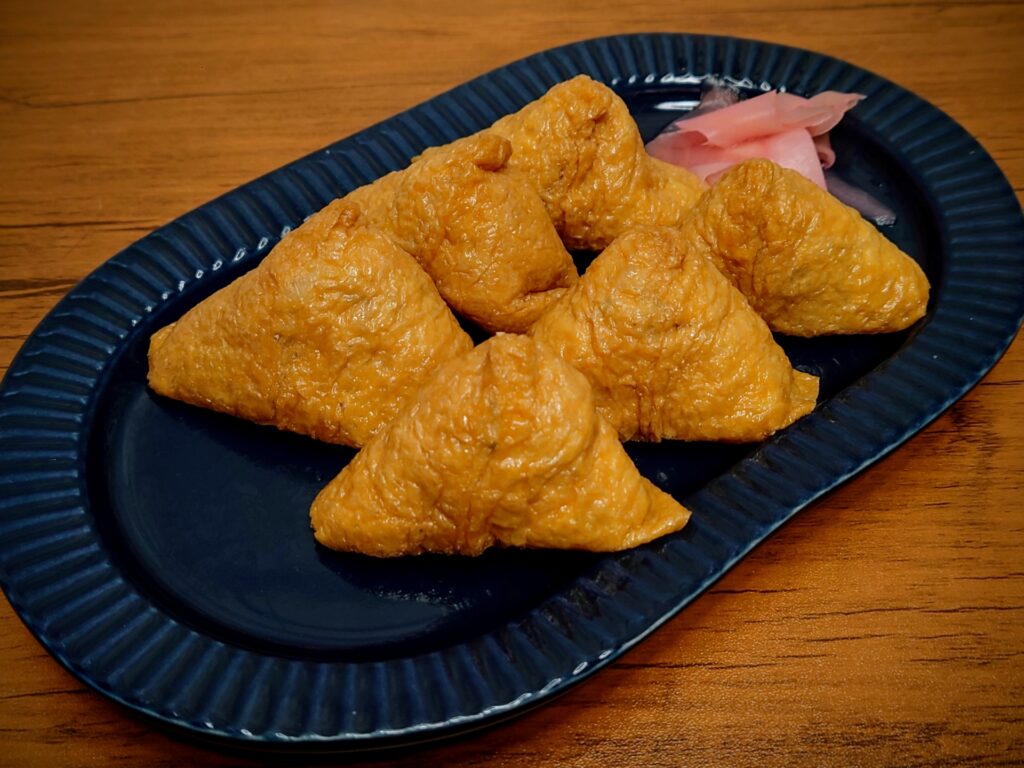
Inari Sushi, also known as inarizushi (稲荷寿司), is a delightful type of Japanese sushi made by stuffing seasoned sushi rice into sweet and savory tofu pouches called aburaage. Unlike traditional sushi types like nigiri (hand-pressed sushi with toppings) or maki (rolled sushi wrapped in seaweed), Inari Sushi is uniquely simple, vegan-friendly, and does not require raw fish. The tofu pouches are simmered in a sweet-salty mixture of soy sauce, sugar, and mirin, giving them their golden brown color and distinctive flavor. The contrast between the slightly vinegared rice and the sweet tofu skin creates a satisfying taste that’s both comforting and accessible.
These bite-sized pockets are often served at picnics, included in lunchboxes (bento), and offered at festivals. Their convenient, portable shape and long shelf life have made them a staple in Japanese households and a favorite among both adults and children.
The History and Meaning Behind Inari Sushi
Inari Sushi carries spiritual and cultural weight in Japanese tradition. The name “Inari” originates from Inari Ōkami, the Shinto god of rice, fertility, and prosperity. Worshippers often leave offerings of aburaage at Inari shrines, as it’s believed to be a favorite food of kitsune (fox spirits), who serve as Inari’s messengers. The tofu pouch, golden and fox-colored, further reinforces this symbolic connection.
Historically, Inari Sushi emerged during the Edo period as a convenient, portable meal for workers and travelers. Unlike other sushi types that required fresh fish and more elaborate preparation, Inari Sushi offered an accessible and affordable alternative. It quickly became associated with home cooking and temple offerings due to its simplicity and the non-meat ingredients, aligning with Buddhist vegetarian practices.
Today, the fox-deity association remains strong, with some regional names for Inari Sushi reflecting this, such as “fox sushi.” The spiritual ties, combined with the dish’s sweet and nostalgic flavor, contribute to its lasting popularity in Japan.

Is Inari Sushi Vegan or Vegetarian Friendly?
Inari Sushi is often considered vegan or vegetarian, but there’s a small caveat. The core ingredients—sushi rice, vinegar, sugar, salt, and tofu pouches—are inherently plant-based. However, some traditional recipes use dashi (Japanese soup stock) to simmer the tofu pouches, and this broth sometimes contains katsuobushi (bonito flakes), a fish-derived ingredient.
To ensure a vegan-friendly version, opt for:
- Kombu dashi: a seaweed-based broth with no animal products.
- Plant-based soy sauce and mirin: some contain animal-derived flavor enhancers.
- Homemade aburaage: if using store-bought pouches, check the label for additives or seasonings.
Many modern recipes and store-bought versions in the West are now adapting to vegan diets, making Inari Sushi a widely embraced plant-based sushi option. For vegetarians and vegans alike, it’s an ideal alternative to raw fish sushi.
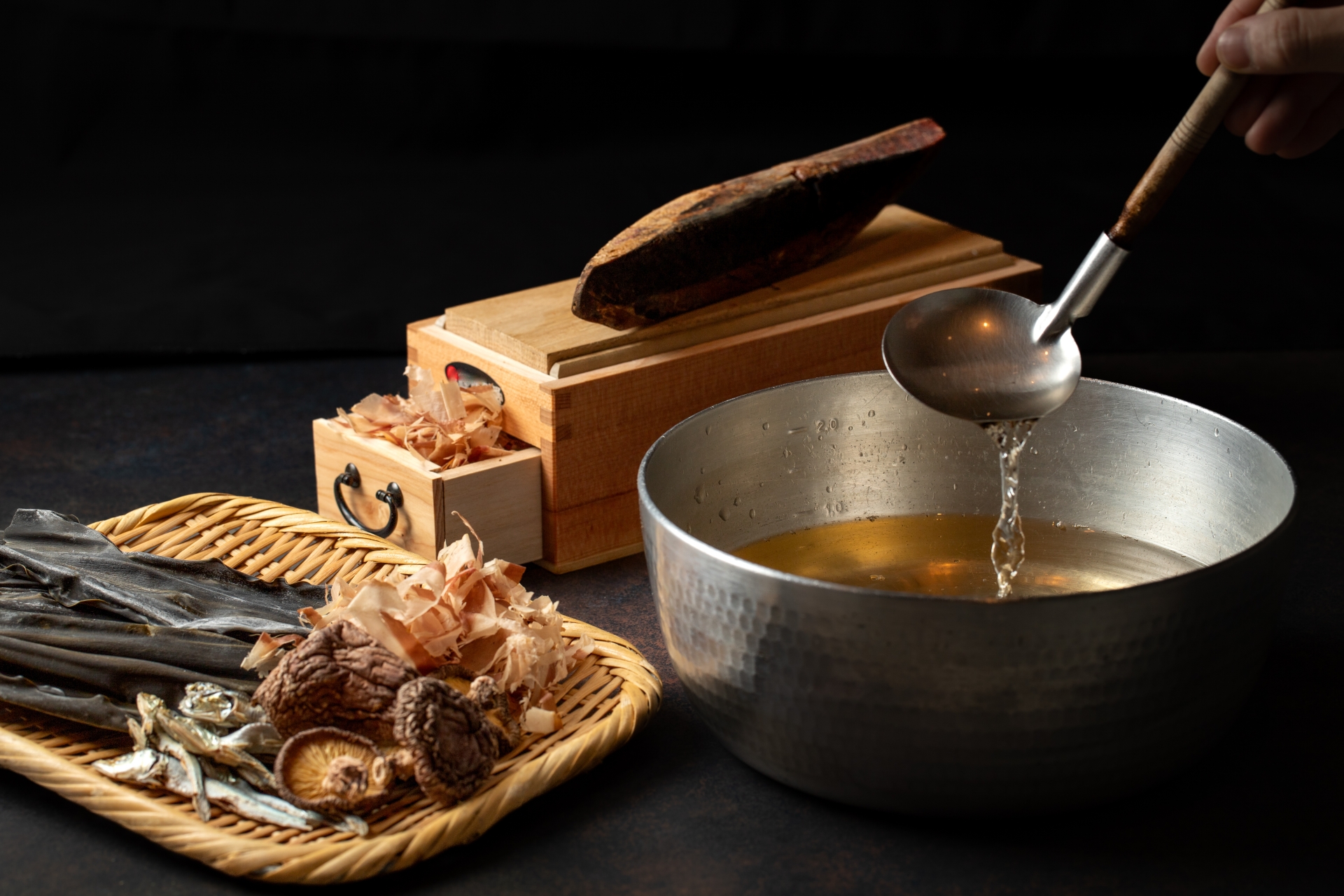
Regional and Modern Variations of Inari Sushi
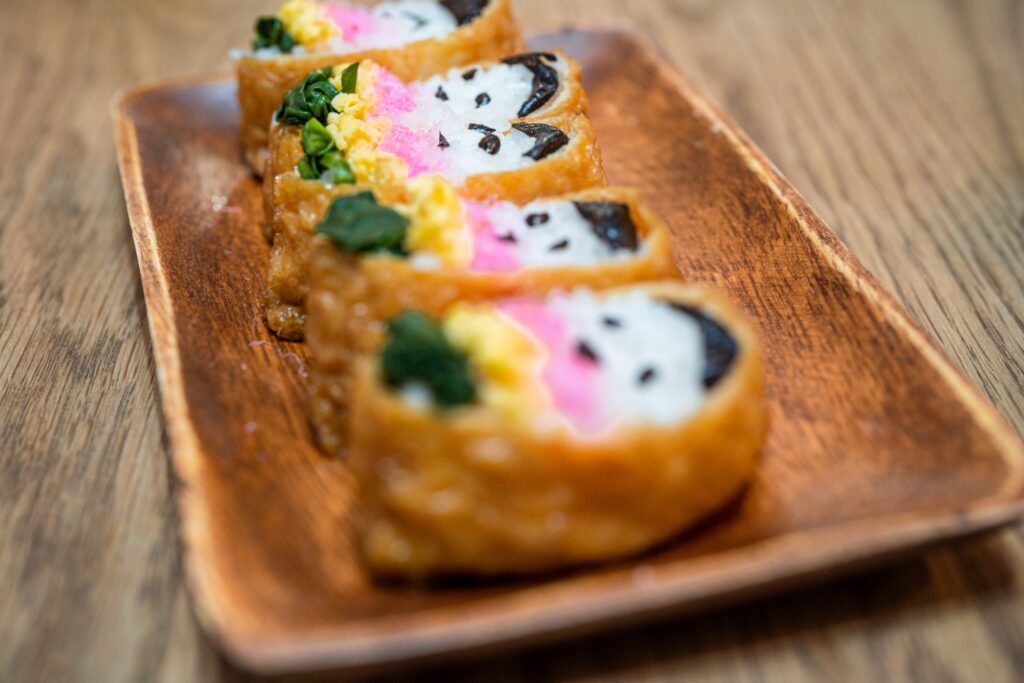
Inari Sushi varies not only by household but also by region in Japan. Two main regional styles dominate:
- Kanto style (Tokyo area): Rectangular in shape and slightly less sweet. Often filled with just vinegared rice.
- Kansai style (Osaka area): Triangular and sweeter in flavor, sometimes mimicking the shape of a fox’s ear.
Beyond these regional differences, contemporary variations have added a modern twist:
- Mixed-in ingredients: Sesame seeds, carrots, pickled vegetables, edamame, or shiitake mushrooms.
- Toppings: Avocado slices, seaweed strips, or spicy mayo.
- Grain alternatives: Quinoa, brown rice, or cauliflower rice for a health-conscious spin.
Whether you prefer tradition or experimentation, Inari Sushi is incredibly versatile and welcoming to personalization.
How to Make Inari Sushi at Home
Making Inari Sushi at home is simple, fun, and beginner-friendly. You can either buy pre-seasoned tofu pouches (inari no moto) or make your own for a fully homemade experience.
Ingredients Checklist
- Sushi rice: Japanese short-grain rice seasoned with rice vinegar, sugar, and salt.
- Aburaage: Thin, deep-fried tofu pouches available at Asian grocery stores.
- Seasoning sauce: Soy sauce, mirin, sugar, and optional dashi (for non-vegan versions).
- Optional fillings: Toasted sesame seeds, diced vegetables, or furikake seasoning.
Substitutions:
- Use tamari for gluten-free soy sauce.
- Replace white sugar with coconut sugar or agave for a natural sweetener.
- Try quinoa or multigrain blends as rice alternatives.
Step-by-Step Recipe Instructions
- Prepare the rice: Cook short-grain rice. While it’s hot, mix with vinegar, sugar, and salt.
- Prepare the pouches: If not pre-seasoned, simmer aburaage in soy sauce, mirin, sugar, and kombu dashi for 10-15 minutes.
- Drain and cool: Let the pouches cool and squeeze gently to remove excess liquid.
- Stuff and shape: Open each pouch carefully, fill with seasoned rice, and press gently into a plump shape.
- Serve and enjoy: Optionally garnish with sesame or thin strips of nori.
Making Your Own Tofu Pouches (Optional Advanced Section)
If you’re up for a challenge, making aburaage from scratch enhances both flavor and texture.
- Deep-fry tofu: Slice firm tofu into thin sheets. Deep-fry at low heat (250°F) until puffed. Then re-fry at high heat (350°F) for crispiness.
- Slice open: Once cooled, cut three sides to create an open pouch.
- Simmer in seasoning: Cook the homemade pouches in soy sauce, mirin, sugar, and kombu dashi.
Safety Tip: Use a splatter guard and maintain oil temperature to prevent burns.
Inari Sushi in Japanese Bento Culture
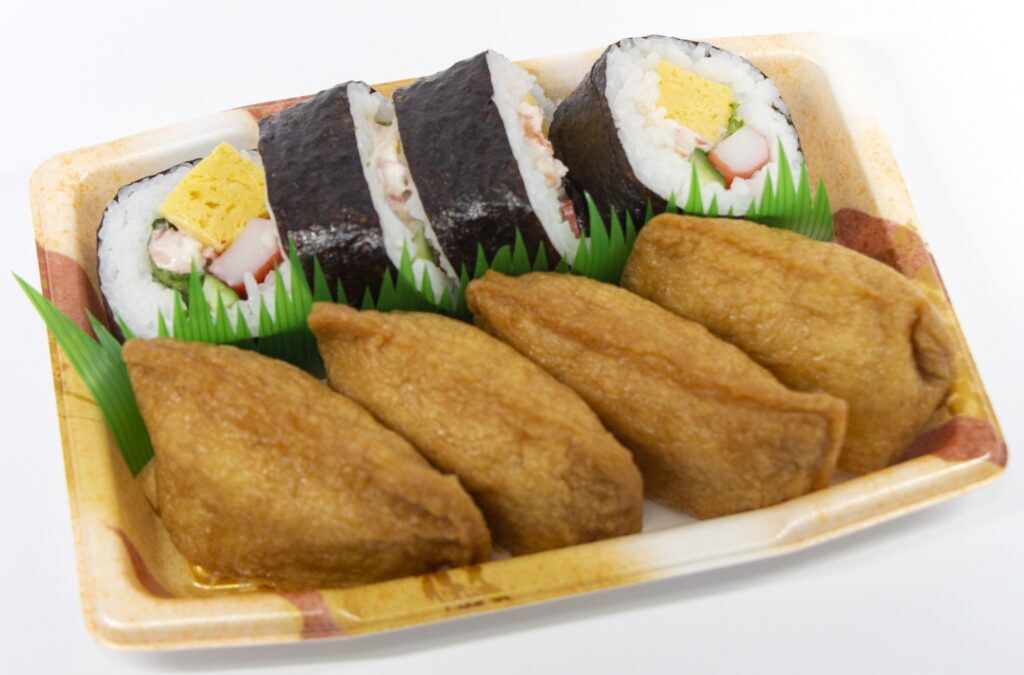
Inari Sushi plays a beloved role in Japan’s bento (lunchbox) culture. Its compact size, appealing color, and sweet-savory balance make it ideal for lunchboxes, especially those prepared for schoolchildren and picnics.
In bento presentations, Inari Sushi is often arranged alongside colorful vegetables, tamagoyaki (Japanese rolled omelet), and pickled items for a visually pleasing and nutritionally balanced meal. Its golden color adds warmth and contrast, and its mild flavor pairs well with both savory and sweet items.
It’s also common to see seasonal variations: shaped into flowers for springtime hanami picnics or decorated with tiny cut-outs of nori or vegetables during festive holidays. Because it keeps well without refrigeration for a few hours, it’s a practical choice for on-the-go meals.
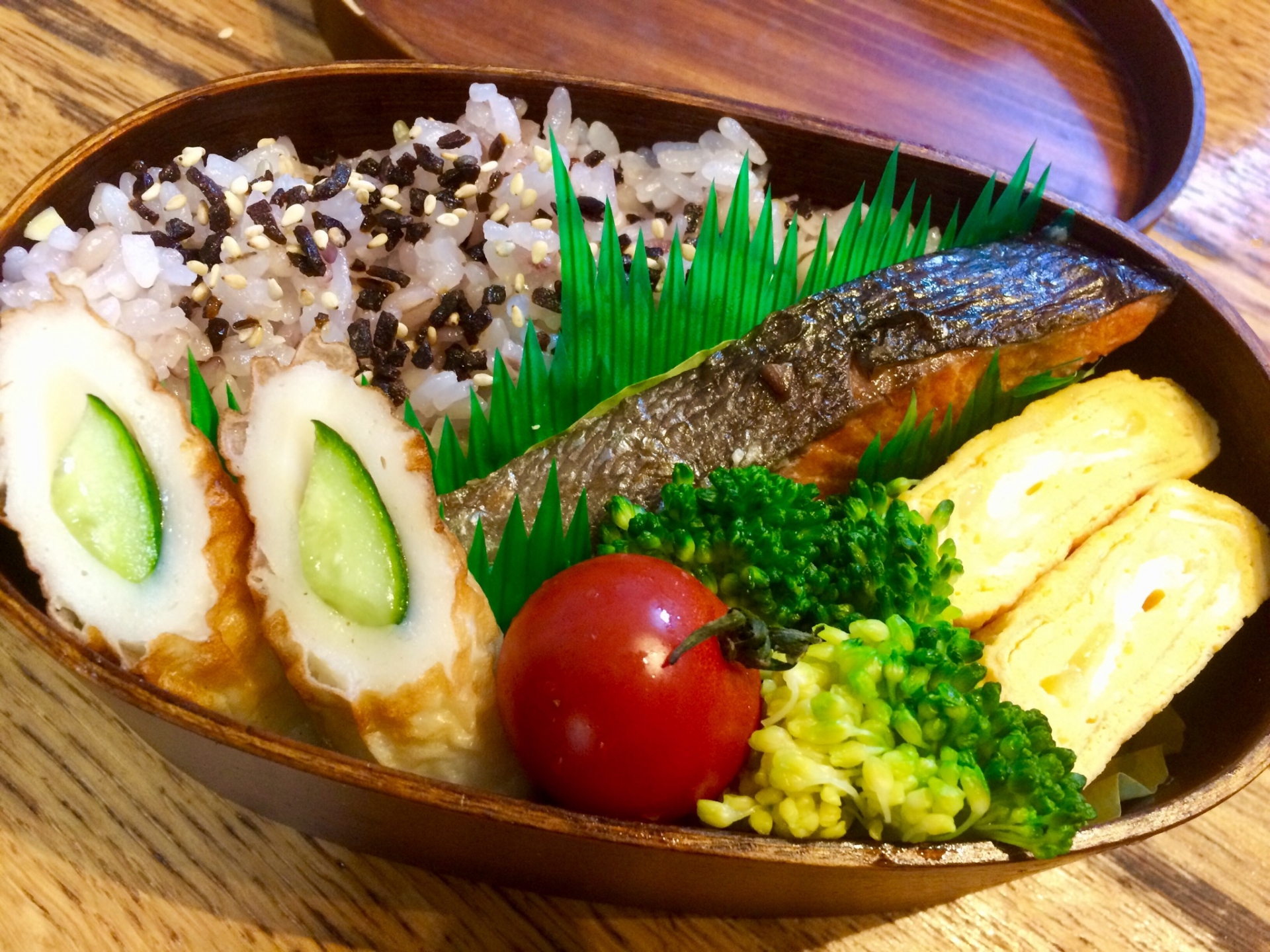
Frequently Asked Questions About Inari Sushi
What does Inari sushi taste like?
It has a sweet and savory flavor with a slightly tangy edge from the sushi rice. The tofu pouch adds a chewy, juicy texture.
Is Inari sushi healthy?
Yes, it’s relatively healthy, especially when made at home. It’s low in fat, free of raw fish, and rich in plant-based protein. Watch sugar and sodium levels in the seasoning.
Is Inari sushi vegan?
It can be. Check if the pouches were simmered in fish-based dashi. Use kombu dashi for a vegan version.
What is the difference between sushi and Inari?
Sushi is a broad term for vinegared rice dishes. Inari Sushi specifically refers to sushi rice stuffed in tofu pouches. It differs from maki (rolled) or nigiri (pressed) sushi.
Why is it called Inari sushi?
The name comes from the Shinto deity Inari. Tofu pouches are believed to be the favorite food of foxes, Inari’s sacred messengers.
Conclusion: Why Inari Sushi Deserves a Spot on Your Plate
Inari Sushi stands out in Japanese cuisine for its delightful simplicity, deep cultural roots, and inclusive nature. Whether you’re exploring vegan-friendly Japanese dishes, introducing sushi to kids, or looking for a flavorful addition to your lunchbox, Inari Sushi offers versatility and tradition in each bite.
Its sweet-savory balance appeals to a wide audience, and its history connects modern diners to centuries of Japanese food culture. With easy preparation methods and endless ways to personalize it, Inari Sushi is more than just a dish—it’s an edible piece of cultural heritage. Give it a try at home or seek it out on your next Japanese food adventure!





